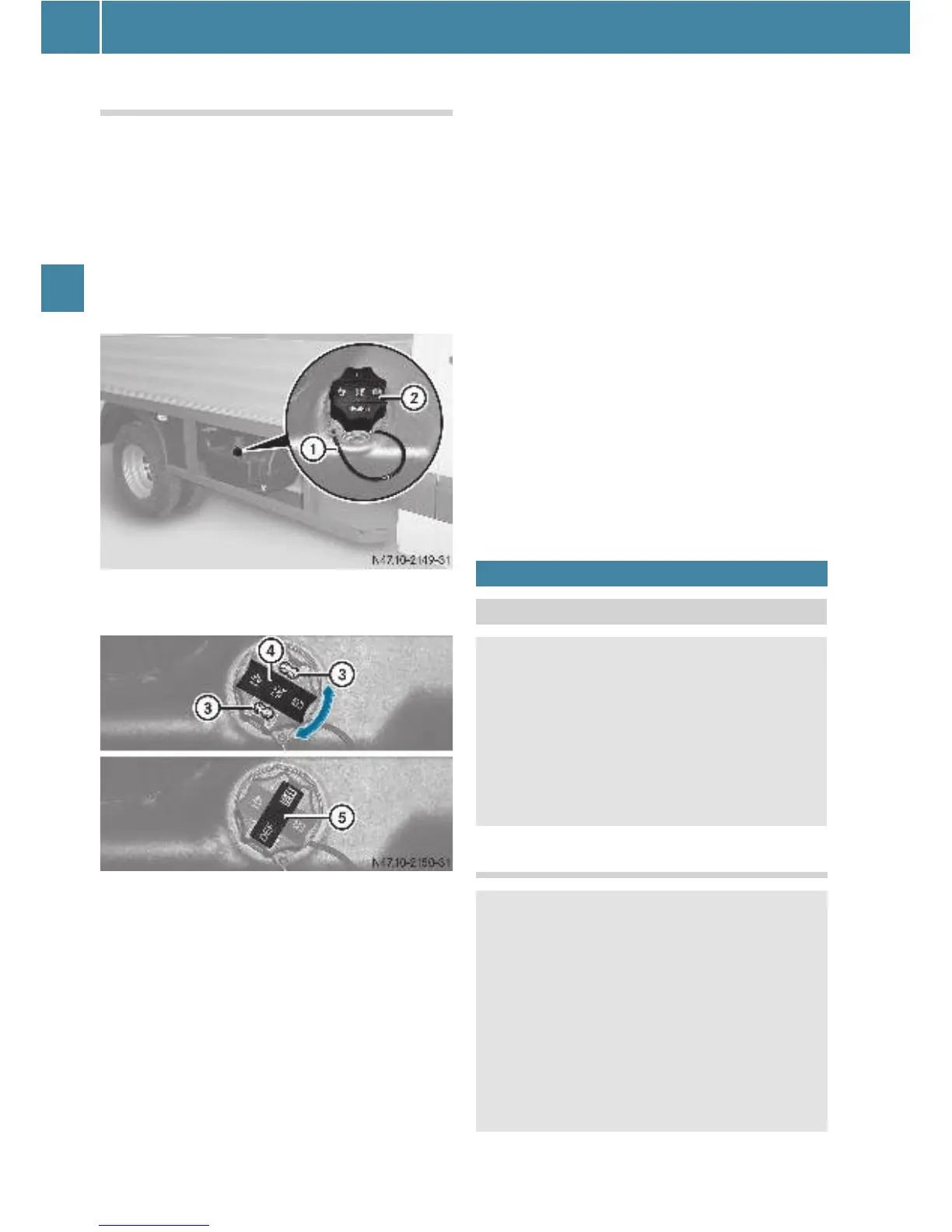Engine compartment
156
Operation
Chassis
E Remove the key from the ignition lock.
E Close all vehicle doors so that no am-
monia vapors can enter the vehicle.
i Do not inhale the ammonia vapors which es-
cape when you unscrew the tank filler cap. Am-
monia vapors have a pungent odor. However,
they are neither toxic nor hazardous to health in
this concentration.
DEF tank on the right-hand side of the vehi-
cle (example: platform truck)
DEF tank filler cap
E Remove tool A for unlocking the fuel
filler cap ; from the footwell on the
co-driver's side (e page 204).
E Pull cover ? up, turn 90° and release.
E Insert tool A into holes = in fuel filler
cap ;.
E Turn fuel filler cap ; counterclock-
wise, remove it and let it hang from re-
taining strap :. Make sure that
tool A remains in tank filler cap ;
while doing so.
E Only fill the tank via the filler neck until
the DEF level can be seen in the filler
neck.
E Position fuel filler cap ; and turn
clockwise to tighten.
E Pull tool A out of fuel filler cap ; and
stow it with the vehicle tool kit in the
footwell on the co-driver's side.
E Pull cover ? up over holes = of fuel
filler cap ; turn and release.
E Turn fuel filler cap ;.
E If fuel filler cap ; turns freely, the DEF
tank is closed.
Opening
Engine compartment
Hood
G Warning
Do not pull the release lever while the vehicle
is in motion. The hood could otherwise open,
thereby impairing visibility and leading to loss
of control of the vehicle.
For this reason, only open the hood when the
vehicle is parked.
G Warning
There is a risk of injury if the hood is open,
even if the engine is not running.
Some engine components can become very
hot.
To avoid the risk of burns, only touch those
components described in the Operating In-
structions and observe the relevant safety
notes.
